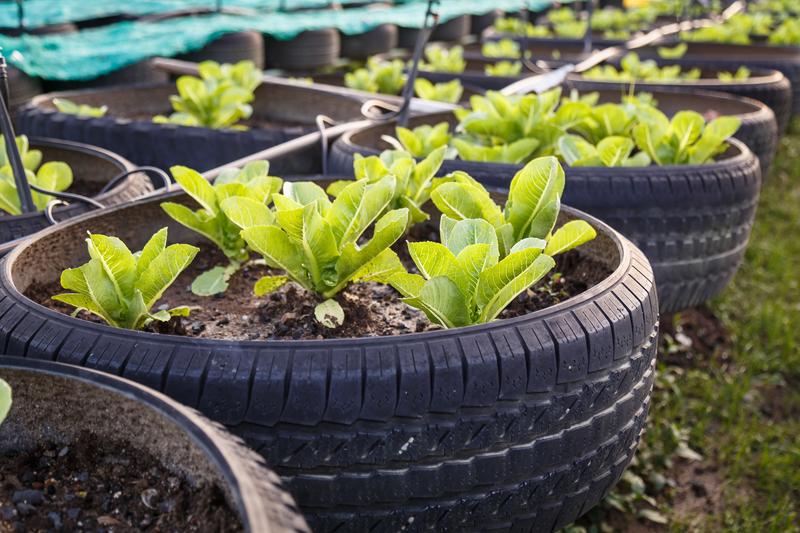Exploring Creative Uses for Wood Waste
In recent years, sustainability has become a central focus in various industries, and the woodworking sector is no exception. As the demand for wood products continues to grow, so does the accumulation of wood waste. Finding innovative solutions for this byproduct can help reduce environmental impact and increase efficiency. In this comprehensive guide, we'll take a closer look at creative uses for wood waste and how these practices contribute to a more sustainable future.
Understanding Wood Waste
Wood waste is primarily composed of organic scrap materials generated from forestry, construction, and manufacturing processes. Common sources of wood waste include sawdust, wood chips, offcuts, and more.
Types of Wood Waste
- Sawdust: Fine particles generated by cutting or grinding wood.
- Wood Chips: Small pieces of wood, often produced by chipping larger wood materials.
- Offcuts: Unused portions of wood from cutting larger pieces to desired sizes.
- Bark and Shavings: Typically generated by processing logs and trees.

Innovative Applications for Wood Waste
1. Composting Wood Waste
Wood waste, particularly sawdust and wood shavings, can be effectively utilized in composting. Here, it acts as a carbon-rich material in compost piles, balancing nitrogen-rich organic matter like food scraps. This process accelerates decomposition and enriches soil quality.
2. Bioenergy Production
Transforming wood waste into bioenergy is a promising solution for reducing dependency on fossil fuels. Through processes such as pyrolysis and gasification, wood waste is converted into biochar, syngas, and other usable forms of renewable energy.
3. Wood Plastic Composites (WPC)
Wood waste is integral to producing wood plastic composites, which combine plastics with wood fibers. These materials are used in manufacturing decking, fencing, and other outdoor applications, offering durability and moisture resistance.
Sustainable Design and Wood Waste
4. Eco-Friendly Building Materials
The construction industry is increasingly interested in using recycled wood waste to create eco-friendly building materials. Products like engineered wood and particleboard are commonly manufactured using sawdust and wood chips, contributing to waste reduction.
5. Artistic Creations and Crafts
Artisans and craftsmen often turn to wood waste for creating unique, handcrafted items. Furniture pieces, sculptures, and home decor items gain a distinct aesthetic when artists repurpose discarded wood, offering an artistic expression that celebrates sustainability.
6. Landscaping and Gardening
Wood chips and shredded bark are widely used in landscaping and gardening as mulch. They help retain soil moisture, inhibit weed growth, and eventually decompose to enrich the soil.

The Environmental Impact of Creative Wood Waste Uses
The numerous applications of recycled wood waste not only offer economic benefits but also pose significant environmental advantages. Here's how reusing wood waste positively impacts the environment:
- Reduction in Landfills: By finding alternative ways to reuse wood waste, industries can minimize the volume of waste sent to landfills, mitigating negative environmental effects.
- Conservation of Resources: Reusing wood waste conserves valuable natural resources such as forests and fossil fuels, fostering a more sustainable future.
- Lower Carbon Footprint: Bioenergy conversion and product recycling significantly reduce carbon emissions associated with the production of virgin materials.
Economic Benefits
In addition to ecological advantages, repurposing wood waste presents commercial opportunities. Enterprises involved in the recycling and repurposing of wood by-products are tapping into new markets, creating jobs, and contributing to a circular economy.
Challenges and Future Prospects
Despite the benefits of recycling wood waste, certain challenges hinder its widespread adoption. Technical limitations, market demands, and the initial costs of establishing wood waste processing facilities are prevalent obstacles. As technology advances, however, the future of wood waste recycling looks promising, with continued innovations expected to further expand its practical applications.
In conclusion, exploring diverse uses for wood waste ushers in a sustainable shift towards resource efficiency and environmental stewardship. Innovative practices, eco-friendly solutions, and creative avenues continue to emerge, paving the way for a more sustainable future.
With awareness and collaboration, industries and individuals alike can make significant strides towards reducing wood waste, ultimately benefiting our planet for generations to come.